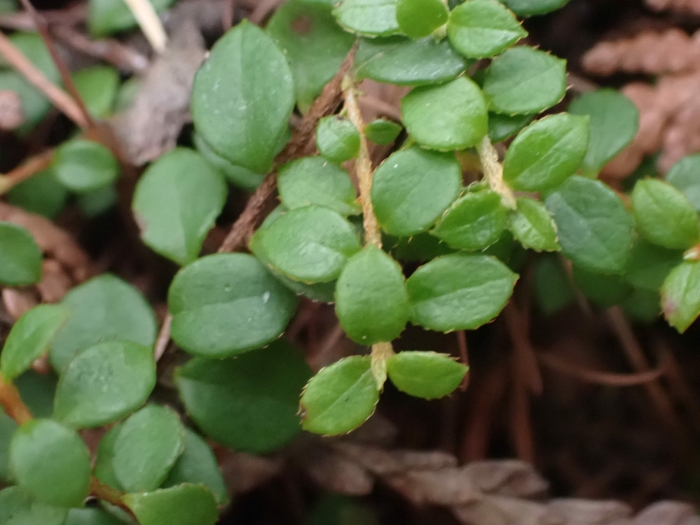Creeping Snowberry
(Gaultheria hispidula)
Creeping Snowberry (Gaultheria hispidula)
/
/

Mary Krieger
CC BY 4.0
















































Estimated Native Range
Summary
Creeping Snowberry is valued for its winter interest provided by the persistent white berries, which resemble small snowballs and persist into winter, and its ability to thrive in shaded conditions where other plants may struggle. It is commonly used as a ground cover in woodland gardens, naturalized areas, and as an understory planting in larger landscapes. This plant prefers partial to full shade, consistently moist but well-drained acidic soils, and is relatively low maintenance once established. It is not known for serious pest or disease issues, but it can suffer from root rot in poorly drained soils. While it is not aggressive, it can spread to form a dense carpet, which should be considered when planting near other small, delicate plants.CC BY-SA 4.0
Plant Description
- Plant Type: Shrub
- Height: 0.7-1.5 feet
- Width: 1-3 feet
- Growth Rate: Slow
- Flower Color: White
- Flowering Season: Spring
- Leaf Retention: Evergreen
Growth Requirements
- Sun: Part Shade
- Water: Medium
- Drainage: Fast, Medium, Slow
Common Uses
Bee Garden, Bird Garden, Butterfly Garden, Deer Resistant, Edible*Disclaimer: Easyscape's listed plant edibility is for informational use. Always verify the safety and proper identification of any plant before consumption., Fragrant, Low Maintenance, Water Garden
Natural Habitat
Cool, moist, acidic soils in coniferous and mixed forests, often in the understory or along forest edges
Other Names
Common Names: Cancer Wintergreen , Maidenhair Berry , Moxie-Plum , Chiogène Hispide , Gaulthérie Hispide , Oeufs De Perdrix , Petit Thé
Scientific Names: Gaultheria hispidula , Chiogenes hispidula , Chiogenes serpyllifolia , Arbutus thymifolia , Vaccinium hispidulum , Phalerocarpus serpyllifolia , Arbutus filiformis , Gaultheria serpyllifolia , Glyciphylla hispidula , Lasierpa hispidula
GBIF Accepted Name: Gaultheria hispidula (L.) Muhl. ex Bigelow